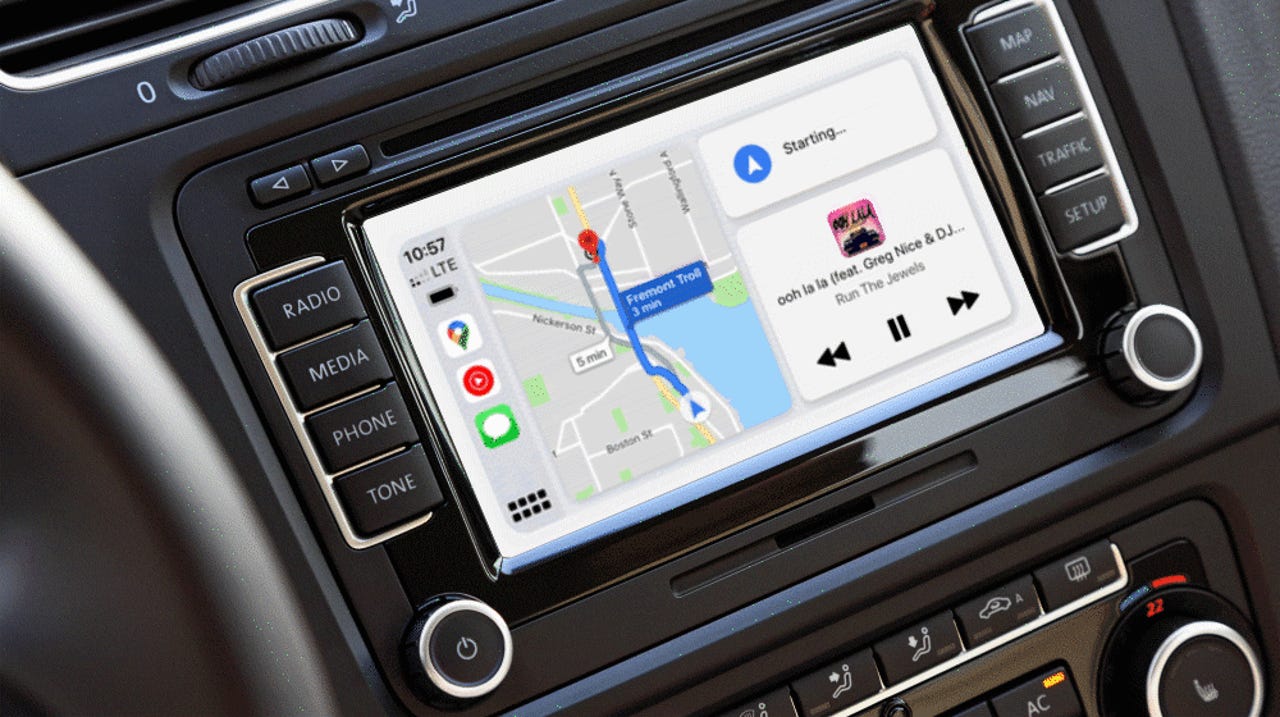Apple CarPlay on the Polestar 2: Two and a half years after launch is still a technical achievement


An example of Apple CarPlay running on a VW vehicle.
This week, Polestar, the EV company owned by Volvo (whose parent is Chinese carmaker Geely), that recently went public in a NASDAQ (PSNY) merger with Gores Guggenheim, released its long-awaited update for Apple CarPlay for its electric fastback sedan, the Polestar 2.
(Disclaimer: I own a Polestar 2 and am a stockholder in PSNY).
The Polestar 2 is unique among EVs because it was the first to launch with Google's Android Automotive operating system. This is different from "Android Auto," a smartphone app mirroring/projection system like CarPlay for vehicles that use different IVI (in-vehicle infotainment stacks).
Electric Vehicles
The Polestar and other Android Automotive-based cars run native Android apps, factored for vehicles, directly on a car's central display unit.
On Polestar 2, CarPlay is deployed as a vendor-integrated Android application, not on the Google Play Store.
Why is this development unique? Because the Polestar 2 was launched in February 2019, it has been almost two and a half years in the making to get this functionality to the company's customers.
Although this is not the first time an automotive maker has deployed CarPlay such a long time after releasing a car (that honor goes to Mazda in 2019, after a 2 year wait to update their Mazda Connect software -- but it required a firmware update and installation of an updated USB hub part as well at the dealership), it is the first time a manufacturer has done so with Android Automotive.
It's even more impressive if you consider that the IVI stack computer the Polestar uses is (purported to be) Intel's A3960, an x86 embedded computer system that was first released circa 2017 and was last revised in 2019. It is not nearly as beefy as the ones used in new EV systems or Android Automotive today -- it features four 2.4Ghz x86 cores, 4GB of onboard RAM, and an Intel HD Graphics 500 GPU. The main display has a resolution of 1536×1152 at 4:3 aspect ratio.
The 2023 model year, which is expected to ship in late Q3 of 2022, is rumored to have a current-generation Intel A-series platform with more memory and potentially more (and faster) cores.
While the fact that Polestar got this to run on an older computer is impressive, you also need to consider that the car shipped with Android Automotive 9 and is now on Android Automotive 11. Most Android smartphone manufacturers have not revised their OS 2 levels since release, but all indications are that Polestar may even bring their 2020-2022 cars to Android Automotive 12, which has significant enhancements.
But I am impressed they pulled any of this off because Google has no known relationship with Apple to integrate CarPlay on their Android Automotive platform. This was (likely) accomplished with Android binaries supplied to Polestar by Apple or a 3rd-party licensed software developer for use on Android Automotive systems.
Regardless, this works. After we received an over-the-air prompt on our 2022 Polestar 2 and performed a 90-minute software update, we found ourselves able to plug in our iPhone with a USB-C to Lightning cable, and CarPlay popped up.
All our favorite apps were there, including Apple Maps, Apple Music, and all our 3rd-party EV apps such as Electrify America (which currently don't exist in Android Automotive). And yes, you can also use Waze, Zoom, and Microsoft Teams, too.
The integration is not perfect, mainly because of the lack of relationship Google has with Apple and not supporting CarPlay as a native application. The second display that the Polestar has for its driver information system cannot show turn-by-turn prompts or maps; only the central display can. There is no State of Charge (SOC) integration with the vehicle on the map applications -- this is needed for battery preconditioning/warmup to optimize for charging when heading to a charger station.
Currently, only the Ford Mach-E supports this with CarPlay due to a special relationship between the two companies – but the Mach-E uses a different IVI stack OS entirely from the Polestar 2.
Regardless, I'm happy CarPlay now works, as I am sure many of Polestar's customers are.